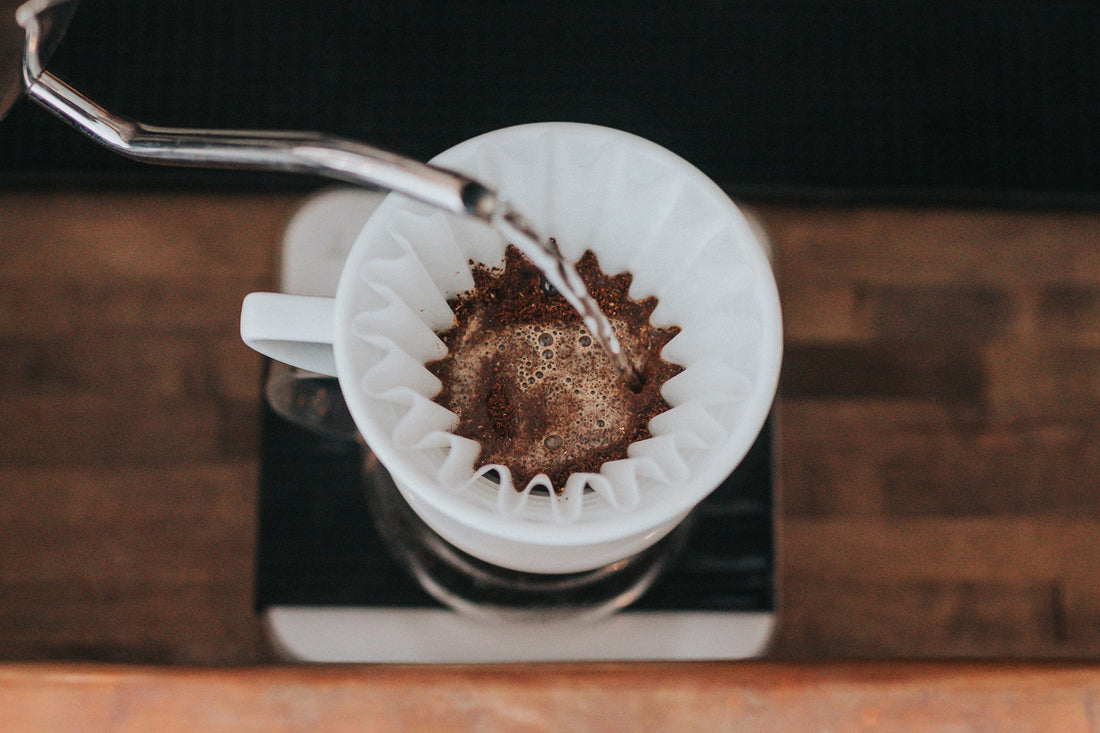If you’ve ever used a brewing method such as a pour-over or aeropress, you may be familiar with the term coffee bloom. But, what exactly is a bloom—what is happening to the coffee during this stage of the brewing process?
A coffee bloom is simply the release of excess carbon dioxide. The bloom occurs in the first initial introduction of the hot water to the freshly ground beans.
But to understand the importance of this, let’s back up.
After coffee beans are roasted, they begin to slowly emit carbon dioxide. This is a result of the gas becoming trapped inside the bean during the roasting process. This is a process is also known as degassing.
The process of degassing is one of the reasons why storage of your beans is vitaly important to their preservation. In order to retain freshness, controlling the amount of oxygen and heat exposure is key. Oxygen exposure as well as higher temperatures cause the gasses to be released more rapidly. Coffee bags with a valve allow for carbon dioxide to escape while protecting and limiting the beans from exposure to oxygen. The peak of freshness for the beans when stored properly is roughly two weeks after roasting.
Make sure to grind the beans fresh each time you brew. By grinding fresh, you also guarantee a slower release of carbon dioxide by limiting the surface area of the bean and its contact with oxygen and humidity which cause the rapid realse of the gas. Fresh ground beans lead to a better brew.
This leads us to the bloom. The goal of the bloom is to start the brewing process not by extracting flavor, but by rapidly releasing excess carbon dioxide.
The coffee bloom says something important about the coffee you are about to enjoy. First of all, it communicates the freshness of the beans. Because the bloom is the release of excess carbon dioxide, a stronger bloom indicates more carbon dioxide, thus, fresher beans. A weaker bloom would suggest a greater amount of carbon dioxide had been released prior to the brewing accounting for an older and less flavorful brew.
The bloom prepares the coffee for extraction. Because of this, you do not want to overwhelm the grounds with water and start the extraction. For a bloom, add enough hot water so that the coffee is slightly wet and allow about 30 seconds or so until the bubbles dissipate.
The strength and time of the bloom indicate how flavorful and fresh your cup will be. If the coffee does not have an adequiate bloom time, the gasses do not fully release and in turn, affect the flavoring of the cup to be more sour because of the excess gasses.
Since Coffee by Gillespie roasts fresh to order, you are always guaranteed a strong bloom and a flavorful cup of coffee. For a fresh stream of coffee every month, check out coffee subscriptions!


